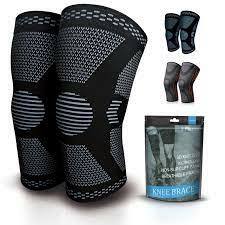Cross-training has gained immense popularity among fitness enthusiasts, athletes, and individuals seeking a well-rounded approach to fitness and health. This diverse training regimen involves mixing different forms of exercise to improve overall performance and reduce the risk of overuse injuries. However, the versatility of cross-training also exposes individuals to a variety of physical demands and potential injuries, including knee issues. In this blog, we will explore the importance of Knee Support Gym in cross-training, highlighting its versatile protection for those who embrace this multifaceted fitness approach.
The Power of Cross Training
Cross-training is a holistic approach to fitness that combines various activities, such as running, cycling, swimming, strength training, yoga, and more. The benefits of cross-training include:
Reduced Risk of Overuse Injuries: By alternating between different activities, you minimize the repetitive stress on specific muscle groups and joints, reducing the risk of overuse injuries.
Improved Fitness: Cross-training helps you develop a well-rounded level of fitness, enhancing strength, endurance, flexibility, and balance.
Injury Recovery: It can serve as an effective recovery strategy for individuals rehabilitating from injuries by allowing them to maintain fitness without aggravating their condition.
Enhanced Performance: Cross-training can improve performance in your primary sport or activity by addressing weaknesses and imbalances.
Knee Issues in Cross-Training
While cross-training offers numerous advantages, it's not without its challenges. Knee issues can arise due to the diverse nature of activities involved. Common knee problems in cross-training include:
Patellofemoral Pain Syndrome (Runner's Knee): Frequent changes in activities can stress the kneecap and surrounding structures, leading to pain.
IT Band Syndrome: Repetitive movements such as cycling or running can irritate the iliotibial band, causing pain on the outer side of the knee.
PCL or ACL Injuries: High-impact activities, jumping, or pivoting motions can increase the risk of posterior cruciate ligament (PCL) or anterior cruciate ligament (ACL) injuries.
Overuse Injuries: The cumulative stress on the knee joint from various activities can result in overuse injuries, particularly in individuals who push their limits.
The Role of Knee Support in Cross-Training
Knee support is a versatile tool for individuals engaged in cross-training as it offers several crucial benefits:
Protection: Knee braces and sleeves provide protection to the knee joint, reducing the risk of injuries during various activities.
Stability: Knee support enhances joint stability, reducing the likelihood of twisting, hyperextension, or misalignment during exercises.
Pain Relief: Compression sleeves and braces can alleviate pain and discomfort associated with knee issues, allowing for more comfortable workouts.
Injury Prevention: Knee Support Gym helps prevent injuries by offering an additional layer of protection against unexpected movements or impacts.
Knee Support Options for Cross-Training
There is a range of knee support options suitable for individuals participating in cross-training:
Knee Compression Sleeves: These lightweight and versatile sleeves offer mild support and compression, aiding in pain relief and injury prevention.
Knee Braces: Knee braces come in various types, including hinged braces and patellar stabilizing braces, which offer different levels of support and stability.
Knee Straps: Patellar straps are designed to relieve pressure on the kneecap and can be beneficial for those experiencing conditions like runner's knee.
Tips for Using Knee Support in Cross-Training
Here are some tips for effectively incorporating knee support into your cross-training routine:
Proper Fit: Ensure that your knee support device fits correctly and comfortably, providing the intended level of support without causing discomfort.
Activity-Specific Support: Consider the type of activities you primarily engage in during your cross-training and choose knee support that suits those activities.
Consult a Professional: If you have a pre-existing knee condition or are unsure about the best knee support for your needs, consult with a healthcare provider or physical therapist.
Gradual Incorporation: When introducing knee support, start with shorter workouts and gradually increase the duration as your body adapts to the added support.
Combine with Proper Technique: Knee support should complement proper exercise technique and form to maximize injury prevention and performance.
Monitor Your Body: Pay attention to any discomfort or pain during cross-training activities. Adjust your routine or knee support as needed.
Conclusion
Cross-training offers a holistic approach to fitness that can improve overall health, performance, and injury prevention. However, it's essential to address potential knee issues that can arise due to the diversity of activities involved. Knee support plays a versatile role in providing protection, stability, and pain relief, allowing you to fully embrace the benefits of cross-training without the fear of knee-related setbacks. Whether you're a seasoned cross-trainer or just starting, incorporating the right knee support can help you achieve your fitness goals while minimizing the risk of knee injuries. Remember that a balanced and well-structured cross-training program, coupled with proper knee support, can keep you on the path to a healthy and active lifestyle.



